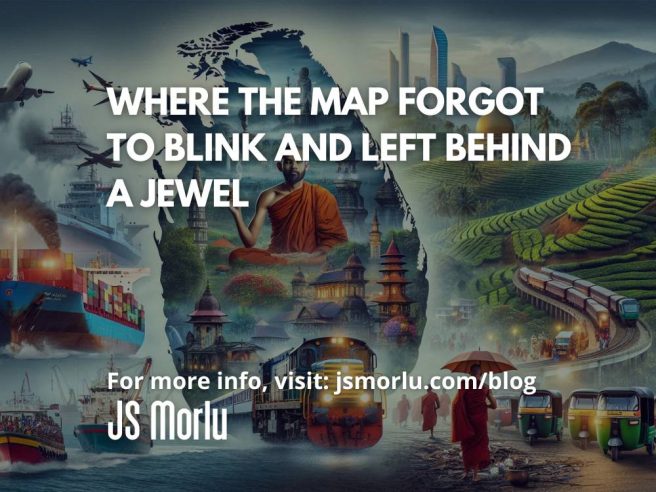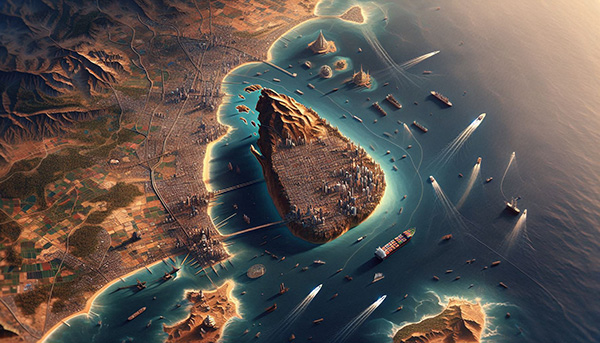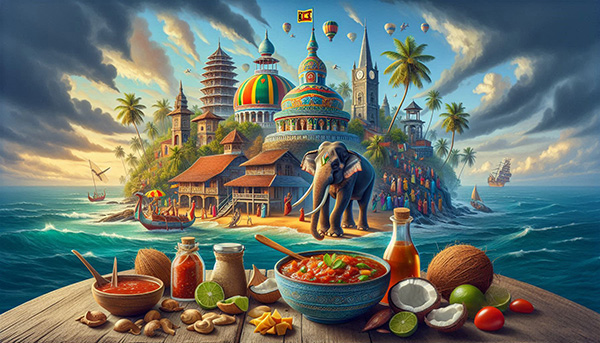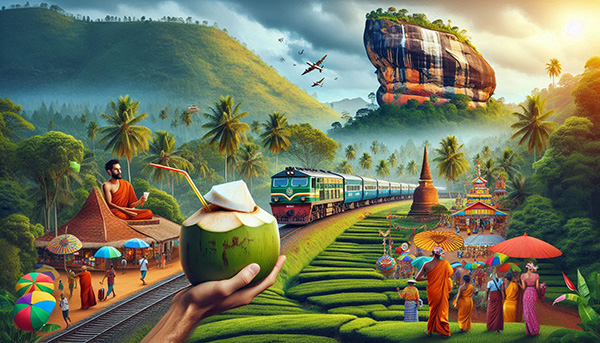By: John S. Morlu II, CPA
Let’s start with a bold claim: Sri Lanka is the most strategically forgotten island on Earth. Yes, I said it. And no, it’s not because of its size — it’s because most people think it’s just a teardrop off the coast of India. But that “teardrop” is actually one of the most geostrategically vital landmasses on the planet, and frankly, the world should be paying more attention — not less.
Welcome to Sri Lanka, the Indian Ocean’s unsinkable aircraft carrier, China’s belt-and-road crush, and India’s nervously side-eyeing neighbor. But before we get into the geopolitical love triangle, let’s locate this little paradise properly.
Where Is Sri Lanka, Really?
Sri Lanka is located just off the southeastern coast of India, separated by a narrow strip of water called the Palk Strait, which is so shallow that even sea gods with social anxiety could cross it on a bad day. For those who need coordinates: 5°55′ to 9°51′ North latitude and 79°41′ to 81°53′ East longitude.
It lies along the maritime Silk Road, a modern trade route China is desperately trying to resurrect (with ports, railways, and persuasive loans). Sri Lanka sits at a point where Asia meets the Middle East and Africa, and where global sea traffic chokes itself into narrow lanes, making it critical for logistics, surveillance, and sometimes… strategic flirting.
Here’s the kicker — Sri Lanka is almost equidistant to Dubai, Singapore, and Nairobi. That means in less than 5 hours, you can hop from Buddhist temples to Arab souks to East African safaris — or more realistically, connect three continents of trade over tea and tension. It’s a dream location, if only more people understood maps.
The Real Estate of the Indian Ocean
Sri Lanka sits right in the center of the East-West shipping lane, one of the busiest in the world. Over 60,000 ships pass south of the island each year, carrying everything from oil and electronics to your next fast-fashion regret. Think of it as the traffic cop of Indian Ocean trade — small in size, massive in control.
That’s why China decided to cozy up with the Hambantota Port, a deep-sea behemoth on the southern coast. Spoiler: Sri Lanka couldn’t pay the bill, so they handed over a 99-year lease to Beijing. That’s not just a port — it’s Monopoly with live countries.
India, meanwhile, is looking over the Palk Strait like an elder sibling who lent their toy and is now watching China play with it. The U.S. also drops in occasionally with defense meetings and diplomatic hugs, just to remind everyone who’s still technically the prom king.
Fun Fact: It’s an Island, but Not Isolated
- Sri Lanka has zero land borders, but it’s just 22 miles from India, so close that legend says a bridge once connected the two — Adam’s Bridge (or Rama’s Bridge), now a series of limestone shoals. Some say it was built by gods. Others say by geology. All agree it’s cool.
- Flights from Colombo to most major Asian cities take under 4 hours. Think of it as Asia’s central nervous node, but with elephants and coconut sambal.
- Unlike other island nations, Sri Lanka didn’t isolate — it absorbed. Arab traders, Dutch colonists, Portuguese invaders, British administrators, and Indian kings have all left bits of themselves behind — in language, law, food, and fashion.
It’s not a melting pot. It’s a beautiful curry of contradictions.
Mountains, Monsoons, and Microclimates
Despite its small size — roughly the size of West Virginia or Ireland — Sri Lanka offers everything except snow and apathy. You’ve got:
- Central highlands with cool, misty tea plantations that make you feel like an unpaid actor in a British drama series.
- Arid northern plains that whisper “India-lite” in Tamil.
- Lush southern jungles where leopards check LinkedIn before stalking deer.
- Stunning coastlines on all sides — east for surfing, south for sea turtles, west for sunsets, and north for politics.
It also has 26 national parks, 8 UNESCO World Heritage Sites, and a biodiversity index that embarrasses larger nations.
Oh, and two monsoons:
- Yala (May–Sept) soaks the south and west.
- Maha (Oct–Jan) drenches the north and east.
If you time it wrong, you’ll be greeted with more rain than a sad Bollywood flashback. But time it right, and you’re in paradise with a mango in one hand and a lion lager in the other.
Geo-Education Meets Vacation
Want to learn geopolitics while sipping king coconut juice? Sri Lanka’s the place. Where else can you:
- Visit a UNESCO site in the morning (hello, Sigiriya),
- Debate Buddhism’s influence on governance at lunch,
- Then take a train through tea country that looks like someone put Switzerland in a curry ad?
You’ll hear Sinhala, Tamil, and English spoken fluently across most regions — a trilingual legacy of kings, colonizers, and school exams. Religious festivals aren’t seasonal — they’re weekly. Public holidays are based on the moon, the sun, and occasionally political pressure.
Sri Lanka isn’t just a destination. It’s a masterclass in geography, history, and humility. It’s where colonialism, trade, religion, and power all collided — and somehow, the people still smile like you just gave them free roti.
Final Pitch: Why You Should Visit
- For the geography nerds: It’s a living case study in trade routes, climate zones, and natural boundaries.
- For the spiritually curious: It’s a melting pot of Buddhism, Hinduism, Islam, and Christianity, where tolerance isn’t just preached, it’s practiced (mostly).
- For the entrepreneurs: Its position makes it a potential gateway to South Asia — if you understand the cultural maps behind the physical one.
- For the romantics: The sunsets, the ancient temples, the lush landscapes — it’s Bali without the influencers.
- For the foodies: Rice and curry is just the beginning. Prepare your tongue for a fire-and-flavor opera, especially if you underestimate the power of local chili sambol.
So here’s to Sri Lanka — the island that history never forgot but the map tried to hide.
Stay tuned for Part 2, where we dive into its people, culture, and why you’ll cry when you leave.
Until then: Stay curious. Google the world. Start with Sri Lanka.
And if you’re smart, book the flight before influencers find out.
About the Author
John is an entrepreneur, strategist, and founder of JS Morlu, LLC, a Virginia based CPA firm with multiple software ventures including www.FinovatePro.com, www.Recksoft.com and www.Fixaars.com . With operations spanning multiple countries, John is on a mission to build global infrastructure that empowers small businesses, entrepreneurs, and professionals to thrive in an increasingly competitive world. He believes in hard truths, smart execution, and the relentless pursuit of excellence. When he’s not writing or building, he’s challenging someone to a productivity contest—or inventing software that automates it.
JS Morlu LLC is a top-tier accounting firm based in Woodbridge, Virginia, with a team of highly experienced and qualified CPAs and business advisors. We are dedicated to providing comprehensive accounting, tax, and business advisory services to clients throughout the Washington, D.C. Metro Area and the surrounding regions. With over a decade of experience, we have cultivated a deep understanding of our clients’ needs and aspirations. We recognize that our clients seek more than just value-added accounting services; they seek a trusted partner who can guide them towards achieving their business goals and personal financial well-being.
Talk to us || What our clients says about us




